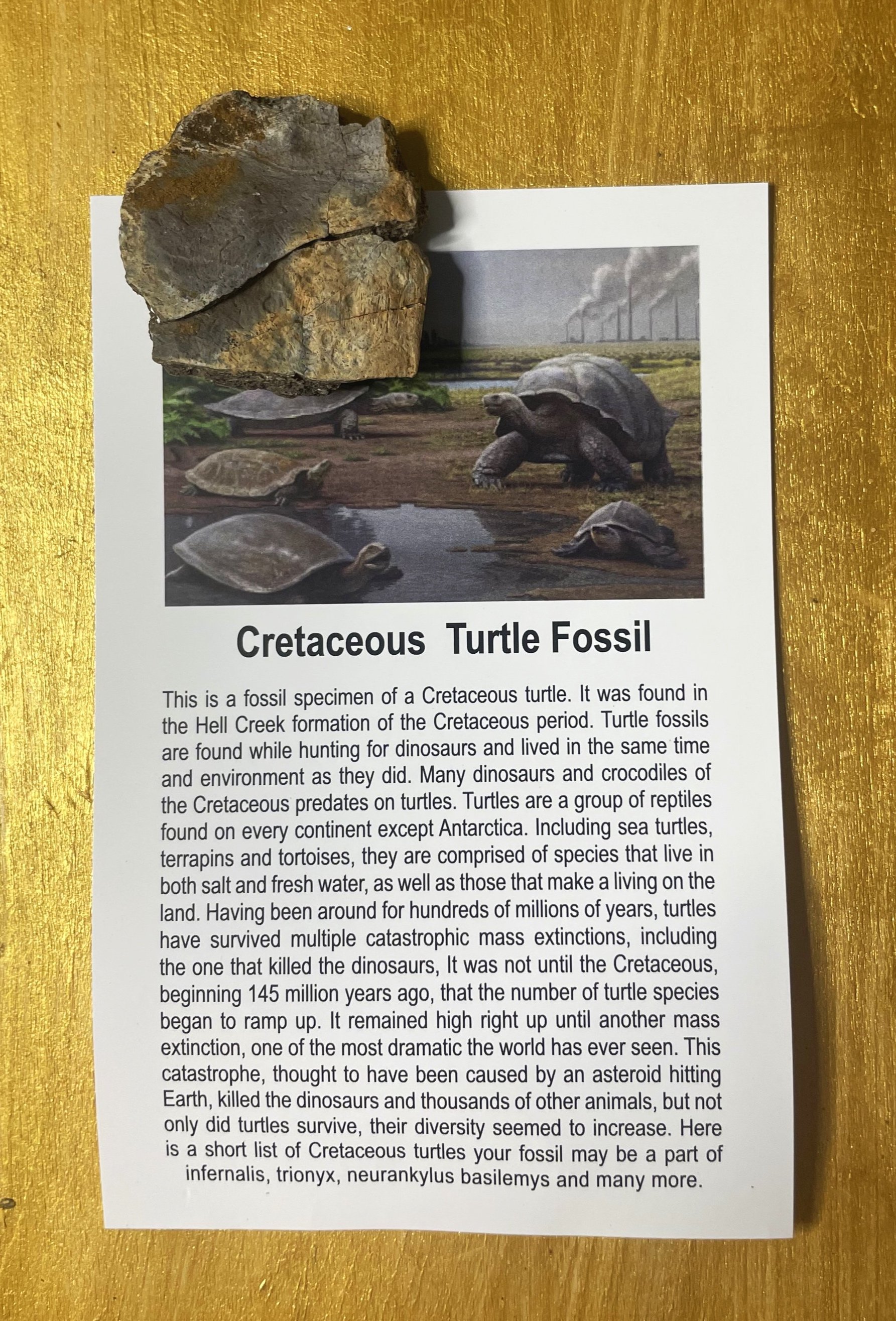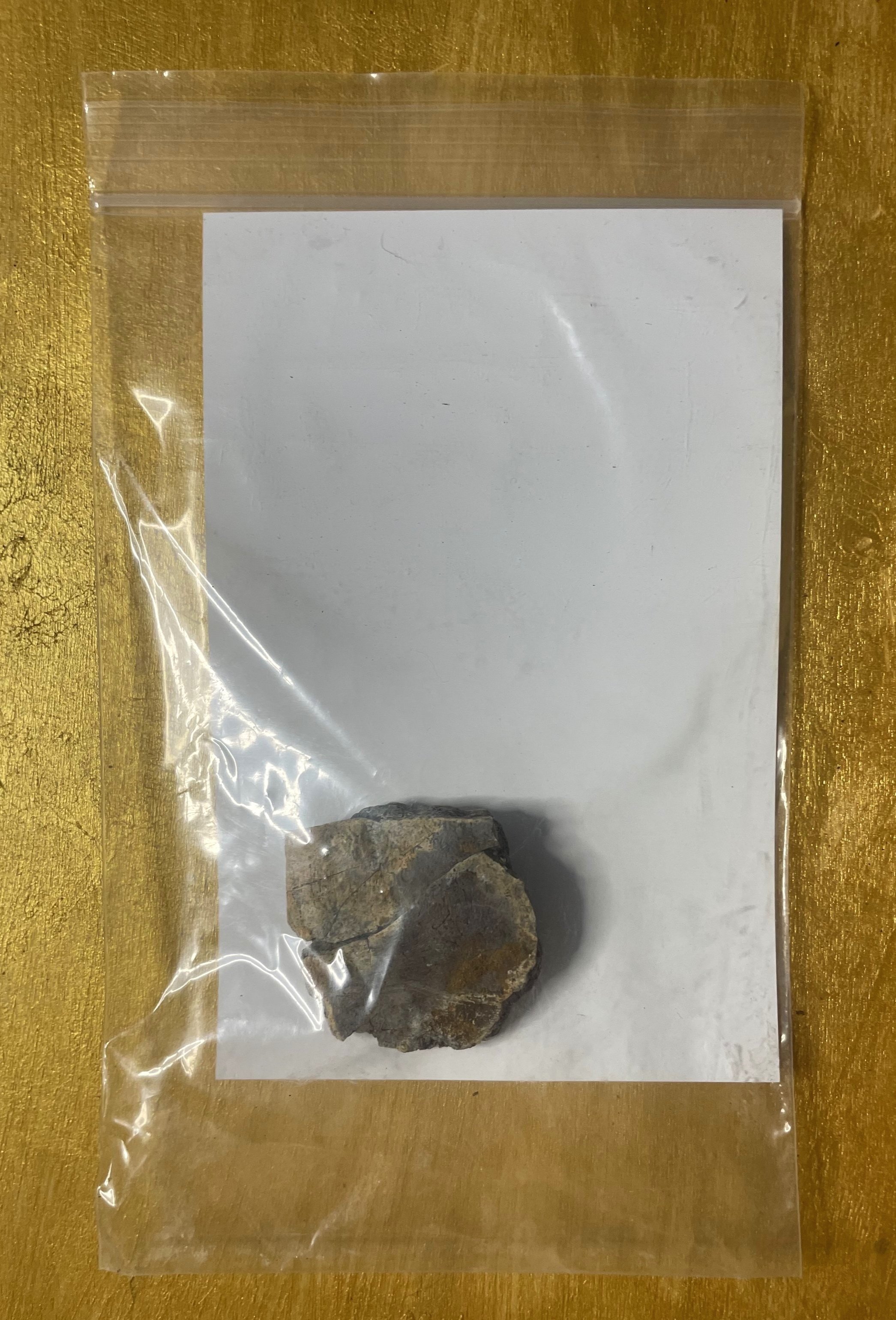Small Cretaceous Turtle Fossil Bag
This Cretaceous Era Turtle Fossill fragment was collected from the Hell Creek Formation in South Dakota, making it approximately 70 million years old.
Each small bag contains a Cretaceous Turtle Fossil Fragment and an informational card.
SPECIES
Triceratops Horridus
AGE/ERA
Cretaceous 70 Million Years Old
LOCATION
Private Land, Powderville, Montana
FORMATION
Hell Creek Formation
DIMENSIONS:
Approx. 1.5 inch piece
RESTORATION:
None
This Cretaceous Era Turtle Fossill fragment was collected from the Hell Creek Formation in South Dakota, making it approximately 70 million years old.
Each small bag contains a Cretaceous Turtle Fossil Fragment and an informational card.
SPECIES
Triceratops Horridus
AGE/ERA
Cretaceous 70 Million Years Old
LOCATION
Private Land, Powderville, Montana
FORMATION
Hell Creek Formation
DIMENSIONS:
Approx. 1.5 inch piece
RESTORATION:
None
This Cretaceous Era Turtle Fossill fragment was collected from the Hell Creek Formation in South Dakota, making it approximately 70 million years old.
Each small bag contains a Cretaceous Turtle Fossil Fragment and an informational card.
SPECIES
Triceratops Horridus
AGE/ERA
Cretaceous 70 Million Years Old
LOCATION
Private Land, Powderville, Montana
FORMATION
Hell Creek Formation
DIMENSIONS:
Approx. 1.5 inch piece
RESTORATION:
None
**Cretaceous Turtle: Shelled Prehistoric Survivors**
The Cretaceous Turtle, a notable resident of the Hell Creek Formation, provides a unique window into the prehistoric ecosystems of the late Cretaceous period. These turtles lived approximately 66 million years ago, coexisting with the last of the dinosaurs just before the mass extinction event.
The fossils, which include well-preserved shells, skeletal fragments, and occasionally complete specimens, reveal much about the morphology and lifestyle of these ancient turtles. They possessed sturdy shells that offered protection from predators and environmental challenges, and their physical traits suggest they were well-adapted to both aquatic and terrestrial environments. Research on these fossils continues to uncover details about their diet, growth patterns, and evolutionary adaptations, offering valuable insights into how these creatures thrived in their changing habitats.




